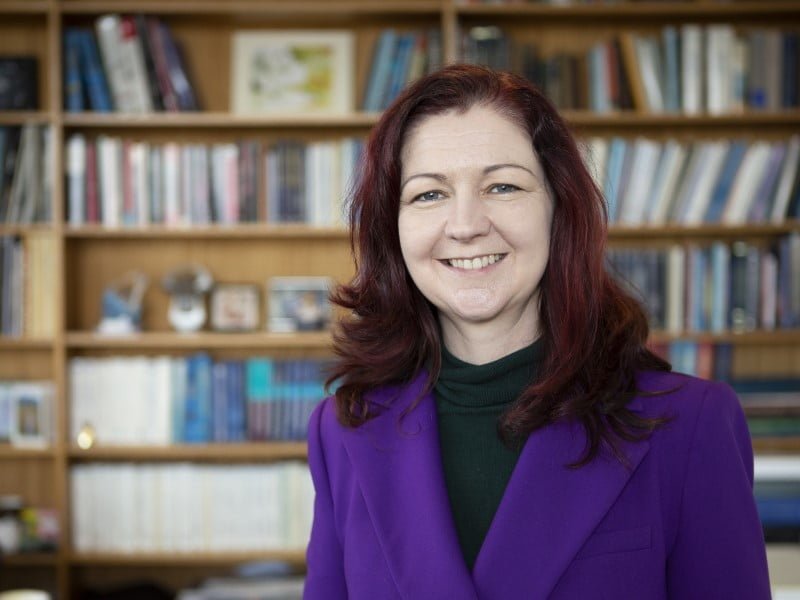An Australian Research Council Centre of Excellence has achieved gender parity among its researchers and students in half a decade, without the need for quotas.
Its leaders say its evidence-based program detailed in a new publication on Friday could be emulated by other organisations.
ARC Centre of Excellence for All Sky Astrophysics in 3 Dimensions (ASTRO 3D) founding director Professor Lisa Kewley said the team used research in sociology and psychology to develop evidence-based strategies and create a “supportive and positive culture in our Centre”.
ASTRO 3D identified a binary gender parity ‘tipping point’ when the proportion of women at the centre reached 40 per cent. After this mark, women students enrolled in the centre in “accelerating numbers”.
There are now more than 300 members of ASTRO 3D. As of January, half its personnel are women. This includes 56 per cent of postdocs and 52 per cent of students. The centre has published a paper detailing its initiatives in Nature Astronomy on Friday.
“Before the introduction of our recruitment and retention initiatives in June 2018, the percentage of women remained approximately constant at 29-42 per cent, depending on [seniority] level. After the new initiatives were introduced, the percentage of women increased steadily in all categories from June 2018 to January 2023,” the report reads.

“Women comprise 30–35 per cent of PhD students, and fewer than 20 per cent at the highest professorial level,” the paper reads. If this status quo is maintained, the researchers estimated that the proportion of women in research would likely remain below 30 per cent “for at least 60 years”.
Current ASTRO 3D director and Swinburne University of Technology astronomy Professor Emma Ryan-Weber, says the paper clearly outlines a pathway to gender equity that other organisations can implement.
“Our researchers have made phenomenal discoveries in understanding how elements, stars, galaxies and the gas that surrounds them evolved from the early Universe to today. Their skills have translated to international success in academia and to solve real-world problems in industry,” Professor Ryan-Weber said.
“But the greatest legacy of ASTRO 3D may be as a role model for better diversity in research.
“Our success offers a model to other organisations, especially in the physical sciences where participation rates for women continue to be well behind the biological sciences, and where gender equality has remained stubbornly low.”
The centre employed five key steps: setting and regularly monitoring diversity targets, selecting a diverse leadership team, providing in-person diversity training for all, and ensuring women make up 50 per cent of postdoctoral selection committees and postdoctoral short-lists.
Some of the key retention policies aimed at supporting the development and workplace environment of women include increasing the number of women in senior positions through leadership programs and recruitment and providing multiple complaint pathways including an anonymous form and external ombudsperson.
Another policy was to provide “clear action against sexism, insults, microaggression, exclusionary behaviour and other factors that produce a poor work culture and atmosphere for women and minorities by consistently following and acting on codes of conduct”.
Data on staff retention also “strongly suggests” that the ASTRO 3D recruitment, retention and culture initiatives have contributed to the retention of women in the centre, according to the report.
For example, 67-70 per cent of women postdoctoral researchers were retained, which contrasts with broader Australian astronomy rate of 62 per cent of junior women postdoctorals not progressing to senior postdoctoral levels.
The authors state that the recruitment of women has not come at the expense of men at the centre as the overall count of people of each gender has grown.
In a statement, Australia’s Women in STEM Ambassador Professor Lisa Harvey Smith applauded Professor Kewley and colleagues on “implementing evidence-based changes to workplace policies and practices that have clearly made a positive impact”.
“It just goes to show how quickly progress can be made when workplace change initiatives are properly designed, monitored, and evaluated. I hope the directors of other research institutes take note,” she said.
In the paper’s conclusion the researchers highlight that a focus on binary gender diversity does not reflect all diversity, which is being worked on in a forthcoming publication.
This “requires the recruitment and retention of people from all cultural, ethnic and religious backgrounds, people of all socioeconomic status, people with disability and people from the LGBTQIA+ community”.
Earlier this year, an independent ‘Pathways to Diversity in STEM’ review led by Cicada Innovations chief executive Sally-Ann Williams issued 19 draft recommendations for the federal government. These were open for consultation until early September with the final report to be handed to government by the end of the year.
Do you know more? Contact James Riley via Email.

